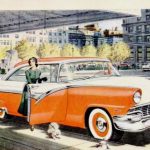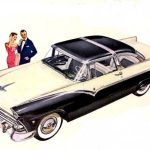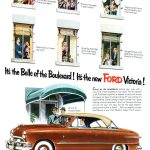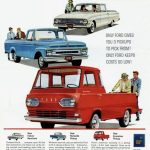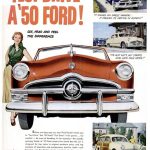Henry Ford’s first turbine engine was in 1925, but that’s a story for another time. The T-bird project began in October 1953 with a 1954 Ford hardtop and then in August 1955 with a 1955 Thunderbird. By March 1956 the car was ready for testing. The goal of the project was “to obtain experience with gas turbine engine packaging and operation,” according to the testing notes. Ford also sought to learn “the special advantages and problems associated with this type of powerplant.”
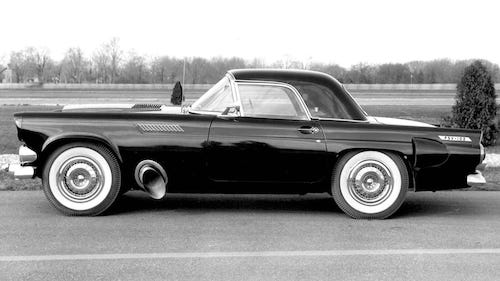 To that end, Ford invested $188,000 (in 1955 dollars) in the turbine-powered Thunderbird prototype. Sourced from aircraft manufacturer Boeing, the turbine, a 500-8C was mounted where a conventional engine would normally go, but with a massive exhaust outlet just behind the front wheels. Boeing only built 17 of these engines, and 10 were for the U.S. Navy’s Mine Sweeper boats.
To that end, Ford invested $188,000 (in 1955 dollars) in the turbine-powered Thunderbird prototype. Sourced from aircraft manufacturer Boeing, the turbine, a 500-8C was mounted where a conventional engine would normally go, but with a massive exhaust outlet just behind the front wheels. Boeing only built 17 of these engines, and 10 were for the U.S. Navy’s Mine Sweeper boats.Results were mixed. Positives included good medium-speed acceleration, a good power-to-weight ratio, a lack of vibration, and low maintenance requirements. However, the notes also mentioned “serious acceleration lag in startup,” as well as problems with the front-mounted exhaust and “numerous other characteristics that represented problem areas.”
When Ford started building their own series of turbine engines, they solved the acceleration lag problem by adding a supercharger.
(Visited 5 times, 1 visits today)
